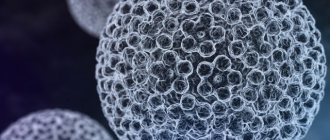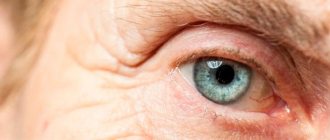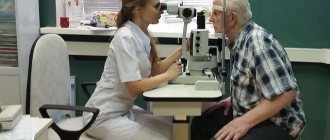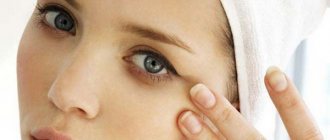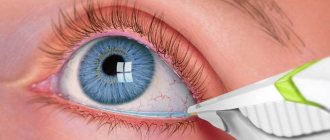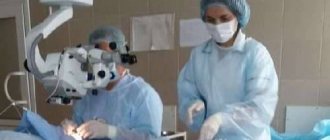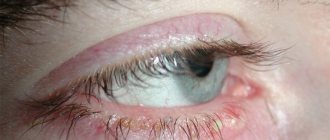Milia are small, white or yellowish acne-like formations that occur due to the accumulation of sebaceous secretions under the skin due to a blocked pore. Milia are localized mainly on the face, around the eyes, cheekbones, eyelids, temples or around the nose. Occurs in people of any age. They can be single elements or arranged in groups. They do not pose a health hazard; it is more of a cosmetic defect. Women suffer from them more often than men.
The reasons that cause the formation of milia are varied. These include hereditary factors, improper skin care, the use of low-quality or inappropriate cosmetics, poor nutrition, disruptions in the gastrointestinal tract, endocrine and hormonal disorders.
Laser removal of milia is a gentle technique that allows you to eliminate these formations safely, painlessly and without unwanted consequences. There are also other methods of removal - mechanical, electrocoagulation and using a curette. The use of these methods carries the risk of leaving residual wounds and scars on the skin. It is undesirable to have such consequences on your face. Therefore, laser removal is considered the most acceptable technique in this case. The laser beam acts on the skin in a targeted manner, preventing infection from entering the wound.
Methods for removing milia
The traditional way to get rid of white nodules on the face is mechanical cleansing. It can be performed using a needle or a special instrument called a curette.
Although this procedure is relatively low cost and available in most clinics, it has a number of disadvantages. In one session, no more than 10 formations are allowed to be removed in this way. Exceeding this norm will lead to disruption of the functioning of the sebaceous glands, as well as damage to the skin. After cleansing the face mechanically, wounds remain that, without proper care, will leave scars.
An effective way to combat milia is skin cleansing through electrocoagulation. To do this, the prepared area of skin is exposed to electric current. As a result, the structure of the formations is destroyed without harm to the tissues located near them. The process takes no more than 15 minutes. And although small wounds remain at the site of exposure, they heal quickly.
The method of laser removal of milia is currently considered the most common way to remove unsightly skin rashes. Its advantages lie in the ability to remove formations located quite deep in the epidermis. In this case, it is possible not only to destroy the structure of the nodule, but also to get rid of microorganisms that can cause inflammation in the area of manipulation.
Several types of lasers are used for the procedure. If a cosmetologist or dermatologist detects acne in an advanced stage, he will advise performing manipulations using an erbium laser. In addition to eliminating formations, it has a beneficial effect on the skin in the upper layers, stimulating the appearance of healthy cells in the future. At the same time, the face is polished and pathogenic microorganisms are eliminated, which becomes the prevention of skin diseases.
If the procedure involves intense exposure to the hair follicle located in the deeper layers of the epidermis, an alexandrite laser is used. It is preferable in cases where the area of influence is the eyelids and other particularly sensitive areas of the face.
Despite all its advantages, this method has limitations in application. It cannot be used in the treatment of people suffering from herpes virus infection, diseases of the endocrine system, diabetes mellitus, and oncology. Women who are pregnant or breastfeeding are not allowed to undergo laser therapy. If the client comes for the procedure with a fever or with signs of damage to the tumor, the session is postponed.
How to get rid of milia?
Milia are white pimples. We'll tell you what causes this, whether they are dangerous and how to get rid of them.
Our experts:
- Elena Kunasheva , dermatovenerologist, cosmetologist, trichologist at the LazerJazz clinic
- Alexander Prokofiev , dermatovenerologist, medical expert of the La Roche-Posay brand
Can you be more precise - what is milium?
This is what milia look like
Elena Kunasheva : Milia are dense cystic formations at the mouth of the hair follicles. They look like a small grain with clear boundaries and are white or yellowish in color.
Alexander Prokofiev : If we use medical terminology, this is a retention miliary cyst. In fact, it is a benign skin formation. Milia do not pose a health hazard; it is a purely cosmetic defect.
Where do they appear most often?
Alexander Prokofiev : In newborns (and this is 40-50% of cases) - on the nose, near the eyebrows, on the bridge of the nose and on the cheeks. In adults (both men and women) - on the temples, in the periorbital area and on the eyelids, that is, where the ducts of the sebaceous and sweat glands and the mouths of hair follicles pass. Sometimes milia can appear on the extremities and genitals.
Wen, milium, millet, “whiteheads” - are they the same thing?
Alexander Prokofiev : Yes, milia are often called millet grass, wen, and “whiteheads.” Millet is a popular definition, due to its external similarity to a grain of millet. If you look at the name of “millet” in Latin - Panicum miliaceum, you can guess where the term “milium” came from.
How to distinguish milia from pimple?
Alexander Prokofiev : A pimple is an inflammatory element, it is always colored red. In addition, a pimple is essentially an abscess, so its contents are soft. Milium is located on unchanged (without redness) skin and has a dense consistency.
How and why is milia formed?
Alexander Prokofiev : These are features of keratinization of the skin due to genetics. Excess keratin forms into a clot, the clot turns into a cyst. Milium generally looks like a sac, the main contents of which are dense protein keratin (sometimes with a small amount of fat).
Elena Kunasheva : In most cases, milia appear as a result of the development of hyperkeratosis. In the epidermis (upper layer of skin), cell division accelerates, and old, already keratinized cells do not have time to exfoliate. Thus, the stratum corneum thickens significantly. As a result, sebum, keratin and dead cells clog the mouth of the hair follicles and sebaceous glands.
Is it true that only those with oily skin develop milia?
Alexander Prokofiev : No, milia can occur in any skin type. This misconception is due to the fact that milia are similar in appearance to closed comedones. And comedones are actually more common in those with oily skin.
On the left are closed comedones, on the right are milia. They look similar. But, unlike comedones, it is impossible to squeeze out milium on your own.
How to prevent milia?
Elena Kunasheva : There is no specific prevention of milia. The advice is very general: monitor your health (especially hormonal levels, gastrointestinal and liver disorders), get checked for hypovitaminosis (lack of vitamins A, C, zinc, iodine, iron and calcium can cause the appearance of milia), eat right (less spicy, salty, smoked , fatty, floury, alcoholic and carbonated).
Don't forget about SPF: ultraviolet radiation disrupts the natural process of exfoliation of dead cells.
Among the procedures for preventing keratinization of the skin (and therefore the appearance of milia), I can recommend microdermabrasion, chemical and laser peeling.
Can milia go away on their own?
Alexander Prokofiev : Depends on age. In newborns, they almost always disappear on their own during the first month of life. In adults - unlikely.
What to do if milia has already appeared? Do pharmaceutical products help? What about salon techniques?
Alexander Prokofiev : Milium is not an acne or a comedone, so squeezing it out is useless: it is impossible to destroy the capsule with pressure. But as a result of strong compression of the surrounding tissues, a scar can be obtained.
Elena Kunasheva : The main method of treatment is removal. How exactly and what to remove depends on the location, size, and number of milia. Single milia are removed mechanically using a sterile needle or glass burette tube. Small wounds at the removal site heal without a trace. For multiple milia, lasers, radio wave method and electrocoagulation are used.
Is it possible to remove milia once and for all?
Alexander Prokofiev : With proper removal, new milia do not appear in the old place. But they can arise on a new one. Then you will have to repeat the procedure.
Our experts:
Elena Kunasheva
cosmetologist
Certified specialist in laser technologies at the LazerJazz clinic.
Alexander Prokofiev
dermatovenerologist
Alexander Prokofiev, a medical expert of the LaRoche-Posay brand, has advised us on various issues more than once: he helped us create a guide to atopic dermatitis, taught us to understand thermal water and the skin microbiome, and suggested how to deal with acne on the back.
How to prepare for removal
Although sometimes milia can be removed from the face without assistance, most often you need to take action to get rid of them. First, it is advisable to identify the cause of facial skin problems. Eliminating it will be an important step for the procedure to be effective. When planning to remove milia surgically, you need to start preparing about a month in advance. To do this you need:
- refuse to visit baths and saunas;
- Avoid damaging the skin with peeling or other methods.
During this time, you must visit a dermatologist or cosmetologist. Having assessed the condition of the skin, the number, location, and depth of nodules, they will determine the course of treatment. If there are few formations on the face, one session will be enough. A large number of milia must be eliminated in several stages. The location of the nodules will largely determine the method of their removal. These conditions will determine how much the service will cost.
How is removal carried out?
Before starting the intervention, it is necessary to treat the face with antiseptic agents. This will prevent the possibility of infection getting into the wound. When removing milia mechanically, the pores will need to be steamed. When exposed to laser, special glasses are worn to protect the eyes.
As soon as all preparatory activities are completed, the specialist begins the procedure. Either a puncture of the papule is carried out, followed by the extraction of its contents, or the neoplasm is cauterized with alternating current until a crust forms. Or laser treatment of milia. At the end of exposure, the skin is treated with anti-inflammatory agents.
A particularly difficult part of the procedure is the removal of nodules that have formed on the eyelid. Since an incorrectly chosen technique can affect the condition of the eye and visual acuity, in addition to the cosmetologist, a dermatologist and an ophthalmologist take part in determining the course of treatment. In order not to damage the delicate skin, a non-contact radio wave scalpel or laser is used to work on this area of the body. If the formations are located in the upper layers of the epidermis, a light peeling will be enough.
Causes of milia
The sebaceous glands are formed in the 3rd month of embryonic development, abundantly covering the skin of the fetus with waxy lubricant and function most actively in the first months of the child’s life and during puberty. The appearance of milia on the skin is associated with a violation of the regulation of sebum secretion and the process of exfoliation of keratinized epidermal cells.
Milia occur in patients with a thick form of oily seborrhea, characterized by hyperfunction of the sebaceous glands and changes in the chemical composition of sebum and creating a favorable background for the development of acne. Increased secretion of sebum and an increase in its viscosity due to a decrease in the amount of linoleic acid and an increase in the level of stearic acid contributes to intense keratinization (hyperkeratosis) in the hair follicle, its clogging with a mixture of thick sebum and horny masses with the formation of comedones. There are closed comedones - whiteheads (milia) and open comedones - blackheads (blackheads). Thick seborrhea is also characterized by the appearance of deep cysts of the sebaceous glands - atheromas and acne vulgaris.
The causes of increased secretion of the sebaceous glands are hormonal imbalance (high levels of androgens), excessive sensitivity of the sebaceous glands to hormonal effects, dysfunction of the autonomic nervous system, gastrointestinal diseases, hypovitaminosis, improper skin care, and nutritional errors. Excessive consumption of fatty, spicy, smoked, canned foods and sweets leads to excessive stress on the pancreas, liver and gallbladder dysfunction, impaired fat metabolism and increased cholesterol levels, which affects the functioning of the sebaceous glands. When using comedogenic cosmetics, excessive drying of the skin with various drugs and procedures, the regulation of natural sebum secretion is disrupted and the risk of developing milia increases.
There are primary milia, which appear spontaneously in the presence of a genetic predisposition to its formation, and secondary milia, which arise as a result of other pathologies. Secondary milia can form against the background of inflammatory and traumatic skin processes (along the edges of scars after abrasions, burns, mechanical peeling - dermabrasion, CO2 laser treatment, surgery), skin diseases (porphyria cutanea tarda, bullous pemphigoid, dystrophic form of epidermolysis bullosa, tuberculosis lupus, cutaneous sarcoidosis). Secondary milia sometimes regress spontaneously. There are family cases of a combination of milia in men with benign tumors of the skin appendages - cystic glandular trichoepithelioma and cylindroma.
Recovery period
The healing time of wounds after removal of milia is 7-10 days. After mechanical manipulation, it is necessary to provide wound care as prescribed by the doctor. When performing other types of interventions, it is strictly forbidden to rip off the resulting crusts. After the recovery period has expired, they will disappear on their own. Regardless of the method of removing nodules, the following requirements must be adhered to:
- during the recovery period, it is necessary to cancel plans for swimming in the sea or pool;
- During this time, you should avoid peeling;
- prolonged exposure to sunlight is also contraindicated.
To speed up the recovery period, a specialist will select a complex of ointments and creams. Therefore, it is worth listening to all his recommendations.
The price for such services in Moscow may vary depending on the level of the clinic or beauty salon. Therefore, it will be useful to find out in advance all the possible options for places where white nodules on the face or body are removed in order to choose the best one in terms of quality and cost. Medical centers that employ qualified specialists and have the necessary special equipment for milia removal are more trustworthy.

